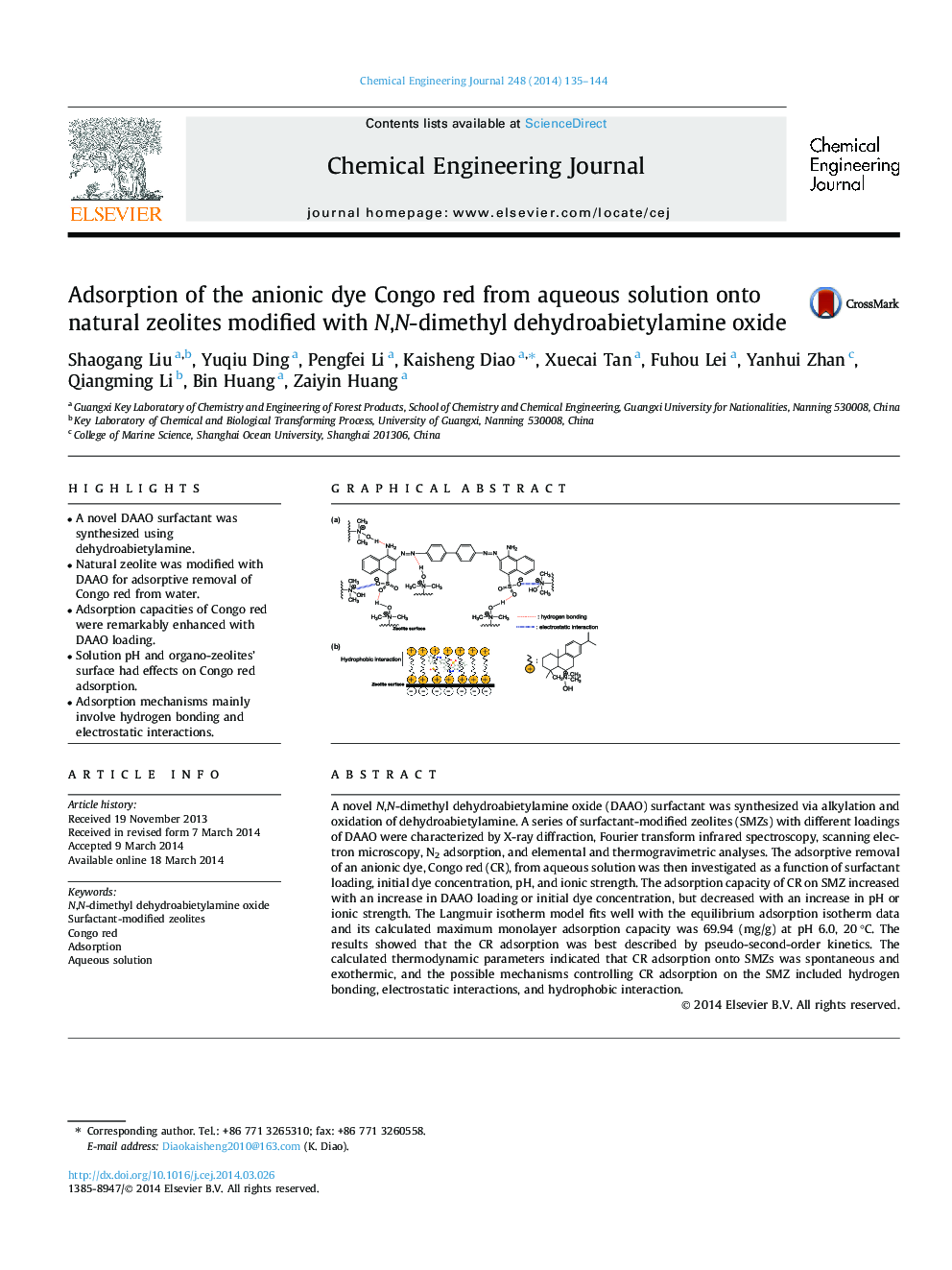| کد مقاله | کد نشریه | سال انتشار | مقاله انگلیسی | نسخه تمام متن |
|---|---|---|---|---|
| 147483 | 456394 | 2014 | 10 صفحه PDF | دانلود رایگان |

• A novel DAAO surfactant was synthesized using dehydroabietylamine.
• Natural zeolite was modified with DAAO for adsorptive removal of Congo red from water.
• Adsorption capacities of Congo red were remarkably enhanced with DAAO loading.
• Solution pH and organo-zeolites’ surface had effects on Congo red adsorption.
• Adsorption mechanisms mainly involve hydrogen bonding and electrostatic interactions.
A novel N,N-dimethyl dehydroabietylamine oxide (DAAO) surfactant was synthesized via alkylation and oxidation of dehydroabietylamine. A series of surfactant-modified zeolites (SMZs) with different loadings of DAAO were characterized by X-ray diffraction, Fourier transform infrared spectroscopy, scanning electron microscopy, N2 adsorption, and elemental and thermogravimetric analyses. The adsorptive removal of an anionic dye, Congo red (CR), from aqueous solution was then investigated as a function of surfactant loading, initial dye concentration, pH, and ionic strength. The adsorption capacity of CR on SMZ increased with an increase in DAAO loading or initial dye concentration, but decreased with an increase in pH or ionic strength. The Langmuir isotherm model fits well with the equilibrium adsorption isotherm data and its calculated maximum monolayer adsorption capacity was 69.94 (mg/g) at pH 6.0, 20 °C. The results showed that the CR adsorption was best described by pseudo-second-order kinetics. The calculated thermodynamic parameters indicated that CR adsorption onto SMZs was spontaneous and exothermic, and the possible mechanisms controlling CR adsorption on the SMZ included hydrogen bonding, electrostatic interactions, and hydrophobic interaction.
Figure optionsDownload as PowerPoint slide
Journal: Chemical Engineering Journal - Volume 248, 15 July 2014, Pages 135–144